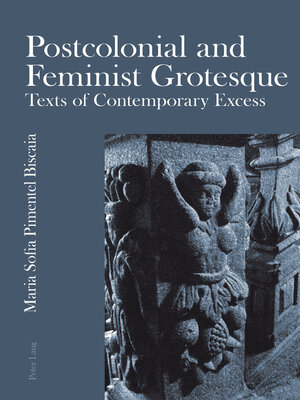Postcolonial and Feminist Grotesque
ebook ∣ Texts of Contemporary Excess
By Maria Sofia Pimentel Biscaia

Sign up to save your library
With an OverDrive account, you can save your favorite libraries for at-a-glance information about availability. Find out more about OverDrive accounts.
Find this title in Libby, the library reading app by OverDrive.



Search for a digital library with this title
Title found at these libraries:
| Library Name | Distance |
|---|---|
| Loading... |
Based on a dialogical premise, this book provides a comparative analysis of two interrelated literary fields: postcolonial and women's/feminist, viewed through the ideological and aesthetic prism of the grotesque. The author examines the work of novelists such as Githa Hariharan, Salman Rushdie, Gabriel García Márquez, Robert Coover and Ben Okri, selected to reveal the range and intensity of the grotesque in contemporary fiction through their de/constructions of gender and postcolonial politics.
Complementary fields with the grotesque are considered through theorisations of Mary Russo, Julia Kristeva, Martha Reineke, René Girard and other intellectuals. Various literary formulations/frameworks are discussed to supplement views presented in the canonical texts of Mikhail Bakhtin and Wolfgang Kayser: post-colonial feminine identity/alterity/exoticism; postcolonial national identity; female grotesqueness and animal metamorphosis; abjectification; the principle of sacrificial economy; mythologisations of feminine martyrdom and motherhood; religious and political tyranny associated with imperialism and re-appropriation of carnivalesque-grotesque types in postmodernity.
Complementary fields with the grotesque are considered through theorisations of Mary Russo, Julia Kristeva, Martha Reineke, René Girard and other intellectuals. Various literary formulations/frameworks are discussed to supplement views presented in the canonical texts of Mikhail Bakhtin and Wolfgang Kayser: post-colonial feminine identity/alterity/exoticism; postcolonial national identity; female grotesqueness and animal metamorphosis; abjectification; the principle of sacrificial economy; mythologisations of feminine martyrdom and motherhood; religious and political tyranny associated with imperialism and re-appropriation of carnivalesque-grotesque types in postmodernity.







